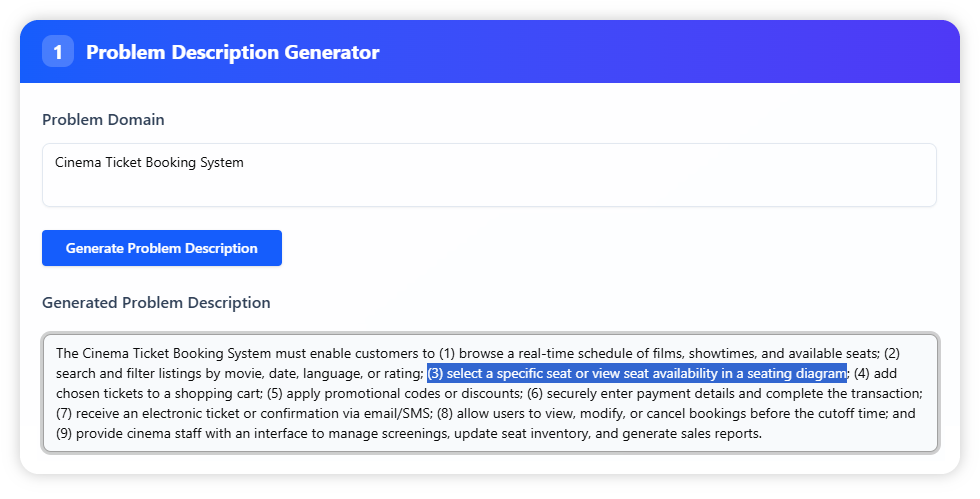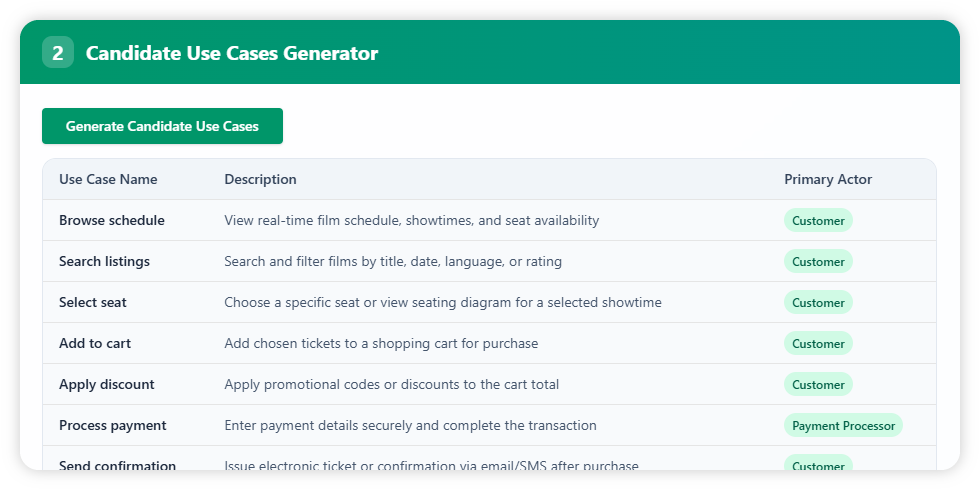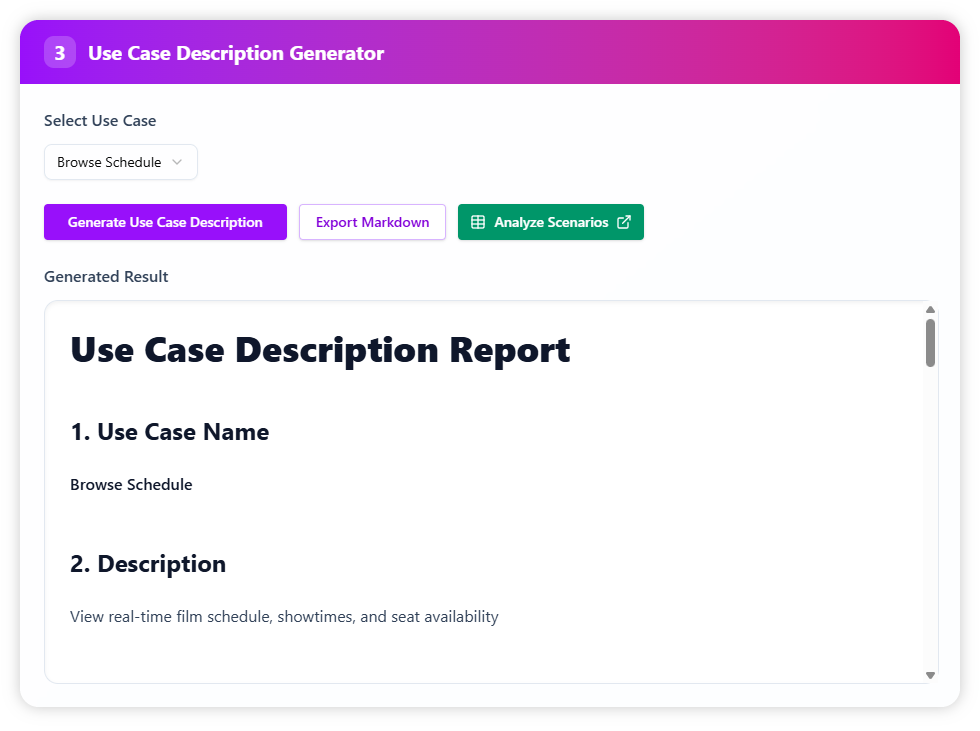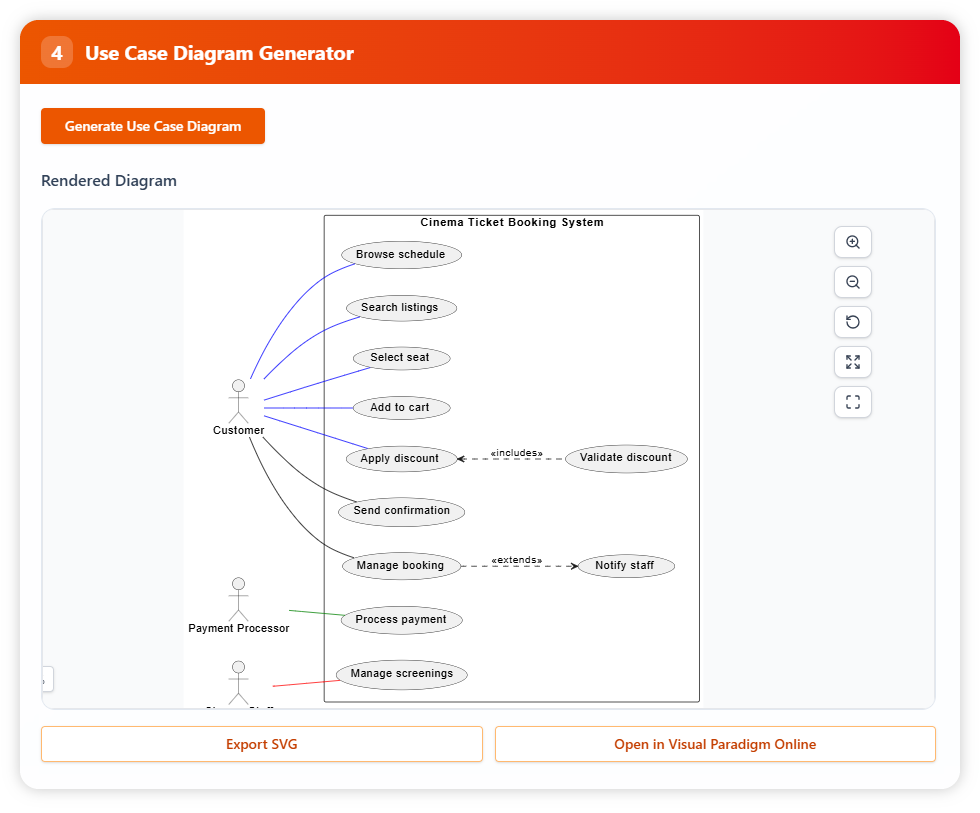Now Reading: AI-Generated Use Case Description: Cinema Ticket Booking System
-
01
AI-Generated Use Case Description: Cinema Ticket Booking System
AI-Generated Use Case Description: Cinema Ticket Booking System
A cinema ticket booking system simplifies how audiences discover movies, select seats, and complete secure payments, while giving cinema staff tools to manage screenings and track sales. This example demonstrates how the use case description generator organizes these tasks into clear, structured models.
Step 1: Problem Description Generator
Enter Cinema Ticket Booking System as the problem domain. The tool produces a comprehensive and editable problem description that covers customer interactions such as browsing schedules, selecting seats, processing payments, and staff functions like managing screenings and reports. You can refine the description to align with your cinema’s unique requirements.

Step 2: Candidate Use Cases Generator
With the problem domain in place, press the “Generate Candidate Use Case” button. The tool creates candidate use cases with their name, description, and primary actor. For this example, the generated set includes browsing schedules, searching listings, selecting seats, adding to cart, applying discounts, processing payments, sending confirmations, managing bookings, and staff-level screening management.

Step 3: Use Case Description Generator
Choose one candidate to expand into a detailed description. Here, the selected use case is Browse schedule. The generator produces a structured description with preconditions, main flow, alternative flows, and exceptions, ensuring that different booking scenarios are clearly addressed. The description can also be exported in Markdown format for integration into documentation or project files.

Step 4: Use Case Diagram Generator
Finally, generate a use case diagram showing the interactions between customers, cinema staff, payment processors, and the various booking activities. The diagram can be exported as an SVG or opened in Visual Paradigm Online for further editing and collaboration.


